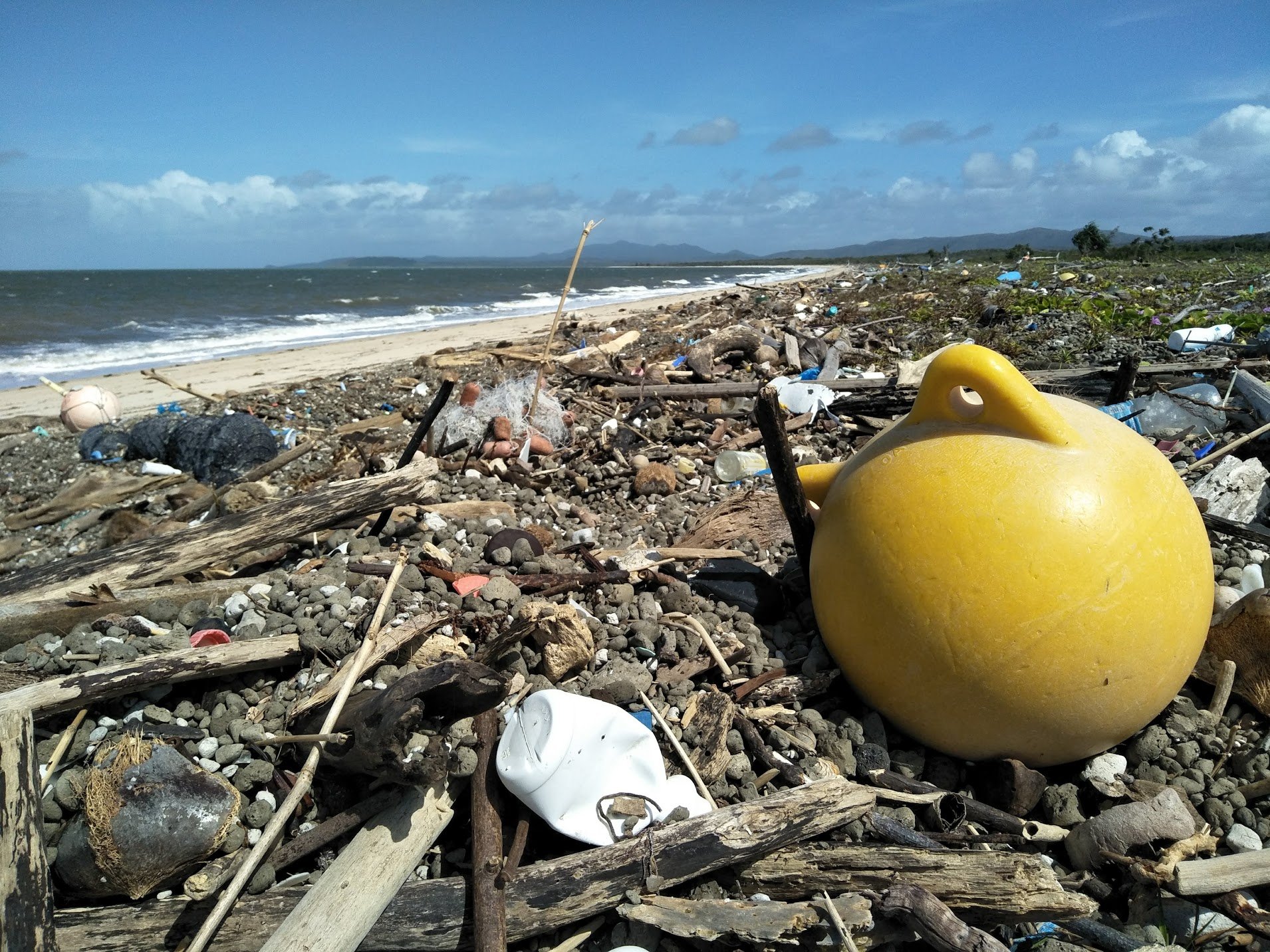Tangaroa Blue Foundation
2,882 plastic floats,211 ghost nets, 147 long line beacons and 234 fish attracting devices are among thousands of items of plastic pollution revealed by the latest Tangaroa Blue aerial survey of the coastline from Cooktown to the tip of Cape York as part of the ReefClean program.
The fourth annual aerial audit of marine debris is supported by the Morris Family Foundation through GBR Helicopters and saw two staff board a R44 helicopter to scan 810 kilometers of remote coastline to help identify areas for future clean-ups.
“In what should be a pristine coastline along the Great Barrier Reef, it’s heartbreaking to take to the sky and see massive pockets of plastic pollution littering the tide lines of these remote beaches,” says Tangaroa Blue CEO Heidi Tait.


“But without an aerial survey like thisthe changing levels of marine debris in these largely inaccessible areas would go unreported and critical habitat would be left to drown in plastic.”
Tangaroa Blue’s helicopter survey provides information to land and sea management organisations such as Traditional Owner Groups, Land and Sea Rangers, Department of Agriculture, Water and the Environment, Great Barrier Reef Marine Park Authority, Queensland Parks and Wildlife Service, Northern Australian Quarantine Service and Australian Border Force.
“Although fishing litter dominates the catch, there is still a wide variety of debris on the beaches. From kids toys and household items to food packaging, plastic drinking bottles and resin pellets, unfortunately the tide of single-use waste keeps rising,” says Tait.

The latest findings come in the wake of the Federal Government’s National Plastics Plan announced in March, which attempted to outline a strategy for addressing the country’s burgeoning plastic waste problem.
“While it’s encouraging that governments are starting to tackle single-use plastics, the sad fact is there are no plans or policies to deal with the debris we’re finding along these remote coastlines. We can't afford to wait decades more before ocean plastics are incorporated into the National Plastics Plan,” Tait says.
The good news is that the helicopter survey also revealed the great work being done by the extensive network of volunteers who venture out to remote areas to participate in clean-ups and log items in the Australian Marine Debris Initiative (AMDI) Database.
According to Tangaroa Blue AMDI Project Officer, Mathilde Gordon, flying over this incredible coastline and seeing the positive impact the Foundation has had was awesome.

"Knowing that just last week we took out a group of volunteers up to Captain Billy Landing and picked up 2.1 tonnes from the beach is so empowering. You could see the massive improvement in the health of the beaches in comparison to the surrounding coastline. It shows that investment in clean-ups at strategic sites is important in maintaining the conservation and cultural value of these places," says Gordon.






